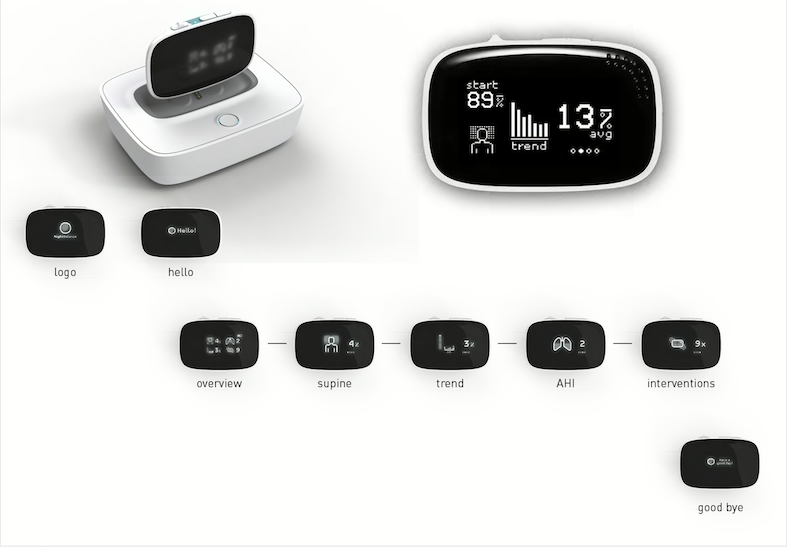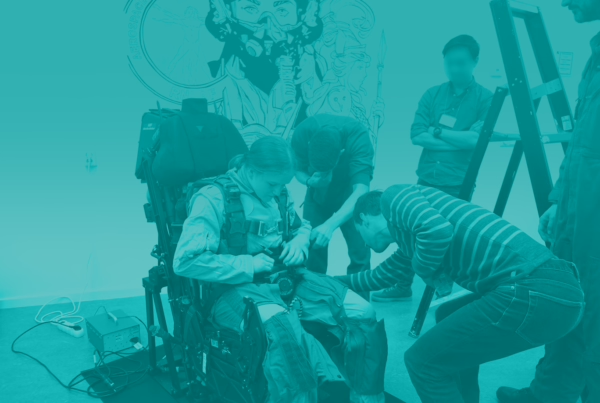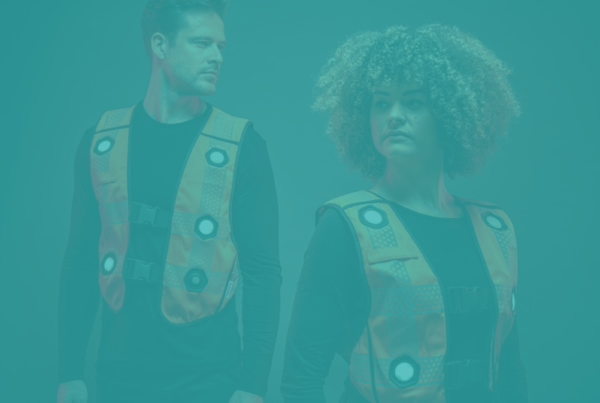
User experience (UX) design in wearable technology is crucial for ensuring that devices become an easy, integrated part of users’ lives. We understand that creating successful wearables isn’t just about incorporating cutting-edge technology; it’s also about ensuring that technology is intuitive and enjoyable to use.
Whether it’s a health-monitoring device or a tool to enhance safety, the wearable technology of Elitac Wearables must meet practical needs while remaining comfortable, convenient, intuitive and easy to operate. Our focus is always on balancing technological innovation with a seamless and satisfying user experience.
The importance of UX in wearable technology
The success of any wearable technology depends heavily on the quality of the user experience. A well-designed wearable should feel almost like a natural extension of the user’s body, requiring minimal effort and providing meaningful functionality.
The key to achieving this lies in understanding users’ needs, habits, and the challenges they face. Our user-centric design process keeps the end-user at the center of wearable development, ensuring that the technology we create genuinely improves lives and delivers exceptional ease of use.
Take for example our BalanceBelt. This device is designed for patients with severe balance disorders, the BalanceBelt uses haptic feedback to help users regain their balance and independence. It has been successful because the UX design focused on simplicity, comfort, and effective feedback—factors that ultimately enhance the user’s quality of life.
Being designed for mostly elderly, it works stand-alone, without a Smartphone App. The button is conveniently big, so it’s easy to find, even without looking. Next to that we have developed a slider hook, resembling the closing system of a bra, to set the size once, and easily open and close after that. We also deliberately placed the BalanceBelt name and logo on the textile part, as an extra reference to make sure the product is not being worn upside down.
In addition, we recently updated the BalanceBelt with an auto-calibration feature. This is a software update, that can now sense automatically in which position the user is (sitting, standing, etc.), and the software automaically adjusts its functionality accordingly. Before this update, the user needed to press the button, when changing position.
Principles of user experience design for wearables
Effective UX design for wearables is centered on understanding user needs and tailoring every aspect of the device to meet those expectations. Simplicity is crucial, as wearables are often used in fast-paced environments where users need quick, clear access to information. Comfortable, ergonomic design ensures the device fits seamlessly into daily life, using lightweight, skin-friendly materials that do not interfere with movement.
Context-aware feedback further enhances the experience by adapting to the user’s environment. For example, fitness wearables that adjust metrics during a hill climb offer more relevant and personalized insights, making the device more useful and intuitive. These principles together create wearables that are functional, user-friendly, and responsive.
Challenges in designing wearables
Designing wearables with a good UX brings unique challenges. One of the biggest issues is limited screen space. Unlike smartphones or tablets, wearable devices have small interfaces, which makes conveying important information in a straightforward way especially challenging. Our UX designers find creative ways to make the most of limited space, using icons, haptic feedback, and light signals to communicate clearly.
Another major challenge is battery life. Wearable devices require a long battery life without compromising their usability or the experience they provide. Finding the right balance between battery consumption and essential features remains one of the toughest aspects of wearable UX design. Because of this, you will never experience a low or empty battery, which can lead to irritation or even to dangerous situations, in case of wearables with heart rate systems.
In addition, wearable technology must adapt to evolving regulations. For instance, new laws require that all wearable devices have removable batteries by 2027, which poses additional design constraints for ensuring compliance, usability and user satisfaction.
Balancing form and function
One of the keys to wearable UX design is striking the right balance between form and function. Devices must not only be practical and functional but also visually appealing and comfortable. An unattractive wearable, or a wearable that is hard to use, will not succeed with users.
We emphasize this balance by leveraging our experience with textile integration to produce devices that combine ergonomics and aesthetics. By embedding electronics seamlessly into clothing, we ensure that our wearables look great while providing meaningful functionality.
Overcoming technical constraints
Designing wearables is also about overcoming technical constraints. A major consideration is the hardware limitations, such as processing power, connectivity, and the size of the components. UX designers must collaborate closely with engineers to ensure that design expectations align with the technical realities.
Elitac Wearables tackles these challenges through collaborative iterations. By working closely with engineers of hardware and firmware (embedded software), our UX designers find creative solutions to overcome technical restrictions. For example, integrating flexible batteries into the garment itself has allowed for better form factors, while strategic antenna placement has improved connectivity without sacrificing comfort.
Future trends in wearable UX design
The future of wearable UX design is promising, with exciting trends on the horizon. Artificial intelligence (AI) will play a significant role, learning user habits to provide smarter, personalized experiences. This will make wearables more intuitive and responsive, enhancing overall usability.
Augmented reality (AR) will also enrich daily life by overlaying real-time information into a user’s field of view, like smart glasses offering navigation assistance. AR can also be used in healthcare settings, such as assisting surgeons by overlaying crucial patient information during procedures or aiding physical therapy with guided exercises.
Beyond navigation, AR-enabled wearables can revolutionize education by offering interactive learning experiences, making abstract concepts easier to understand through visualization. In the workplace, AR wearables could also provide real-time guidance to technicians, improving productivity and reducing errors.
By using Haptic Feedback in our wearables (giving information to a user through vibration signals), we actually make use of the users’ sense of touch.
In a very intuitive way, you get information by vibrations, and very intuitively react to it. This is very practical in navigation cues as seen in our Mission Navigation Belt. But we can even guide brain surgeons during surgery, to a 0.3 mm accuracy, like using a parking sensor in your car). This helps users to reduce cognitive load and keeping their eyes, ears and hands free for other tasks!
This adaptability makes them ideal for various professional and everyday use cases, increasing wearables’ versatility across sectors.
Voice interfaces are set to become more common as well, enabling hands-free use for health and fitness applications. These developments will ensure that wearables remain intuitive, user-friendly, and seamlessly integrated into everyday life.
Would you like to learn more about how Elitac Wearables designs products that prioritize user comfort and experience? Contact us today to explore our innovative approaches to wearable technology.




